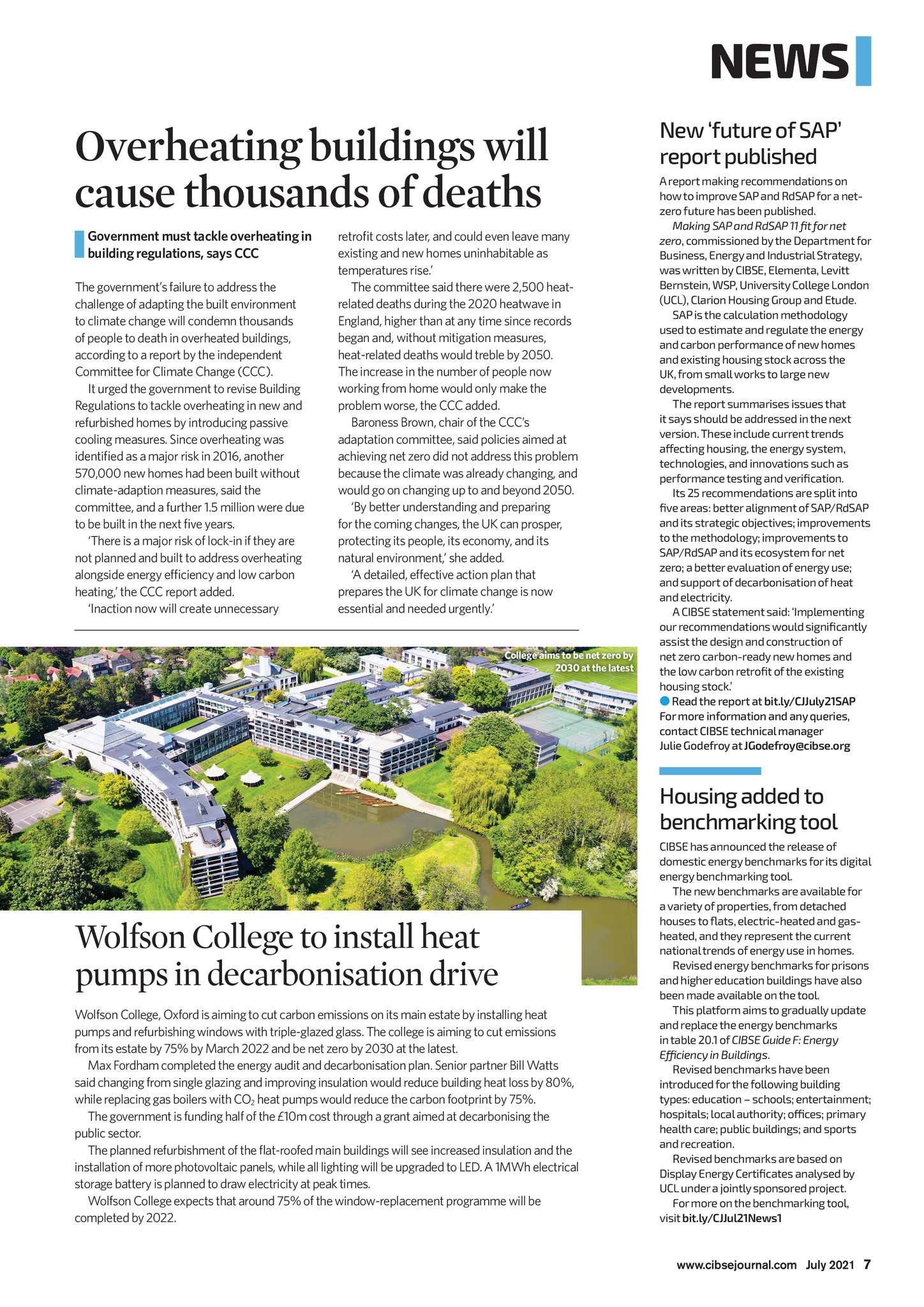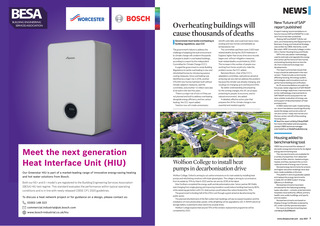


EWS Overheating buildings will cause thousands of deaths Government must tackle overheating in building regulations, says CCC The governments failure to address the challenge of adapting the built environment to climate change will condemn thousands of people to death in overheated buildings, according to a report by the independent Committee for Climate Change (CCC). It urged the government to revise Building Regulations to tackle overheating in new and refurbished homes by introducing passive cooling measures. Since overheating was climate-adaption measures, said the not planned and built to address overheating heating, the CCC report added. Inaction now will create unnecessary existing and new homes uninhabitable as temperatures rise. England, higher than at any time since records began and, without mitigation measures, The increase in the number of people now working from home would only make the problem worse, the CCC added. Baroness Brown, chair of the CCCs adaptation committee, said policies aimed at achieving net zero did not address this problem because the climate was already changing, and By better understanding and preparing for the coming changes, the UK can prosper, protecting its people, its economy, and its natural environment, she added. A detailed, effective action plan that prepares the UK for climate change is now essential and needed urgently. College aims to be net zero by 2030 at the latest New future of SAP report published A report making recommendations on how to improve SAP and RdSAP for a netzero future has been published. Making SAP and RdSAP 11 fit for net zero, commissioned by the Department for Business, Energy and Industrial Strategy, was written by CIBSE, Elementa, Levitt Bernstein, WSP, University College London (UCL), Clarion Housing Group and Etude. SAP is the calculation methodology used to estimate and regulate the energy and carbon performance of new homes and existing housing stock across the UK, from small works to large new developments. The report summarises issues that it says should be addressed in the next version. These include current trends affecting housing, the energy system, technologies, and innovations such as performance testing and verification. Its 25 recommendations are split into five areas: better alignment of SAP/RdSAP and its strategic objectives; improvements to the methodology; improvements to SAP/RdSAP and its ecosystem for net zero; a better evaluation of energy use; and support of decarbonisation of heat and electricity. A CIBSE statement said: Implementing our recommendations would significantly assist the design and construction of net zero carbon-ready new homes and the low carbon retrofit of the existing housing stock. Read the report at bit.ly/CJJuly21SAP For more information and any queries, contact CIBSE technical manager Julie Godefroy at JGodefroy@cibse.org Housing added to benchmarking tool Wolfson College to install heat pumps in decarbonisation drive Wolfson College, Oxford is aiming to cut carbon emissions on its main estate by installing heat pumps and refurbishing windows with triple-glazed glass. The college is aiming to cut emissions Max Fordham completed the energy audit and decarbonisation plan. Senior partner Bill Watts while replacing gas boilers with CO heat pumps would reduce the carbon footprint by 75%. public sector. storage battery is planned to draw electricity at peak times. Wolfson College expects that around 75% of the window-replacement programme will be CIBSE has announced the release of domestic energy benchmarks for its digital energy benchmarking tool. The new benchmarks are available for a variety of properties, from detached houses to flats, electric-heated and gasheated, and they represent the current national trends of energy use in homes. Revised energy benchmarks for prisons and higher education buildings have also been made available on the tool. This platform aims to gradually update and replace the energy benchmarks in table 20.1 of CIBSE Guide F: Energy Efficiency in Buildings. Revised benchmarks have been introduced for the following building types: education schools; entertainment; hospitals; local authority; offices; primary health care; public buildings; and sports and recreation. Revised benchmarks are based on Display Energy Certificates analysed by UCL under a jointly sponsored project. For more on the benchmarking tool, visit bit.ly/CJJul21News1 www.cibsejournal.com July 2021 7 CIBSE July 21 pp07 News.indd 7 25/06/2021 16:06